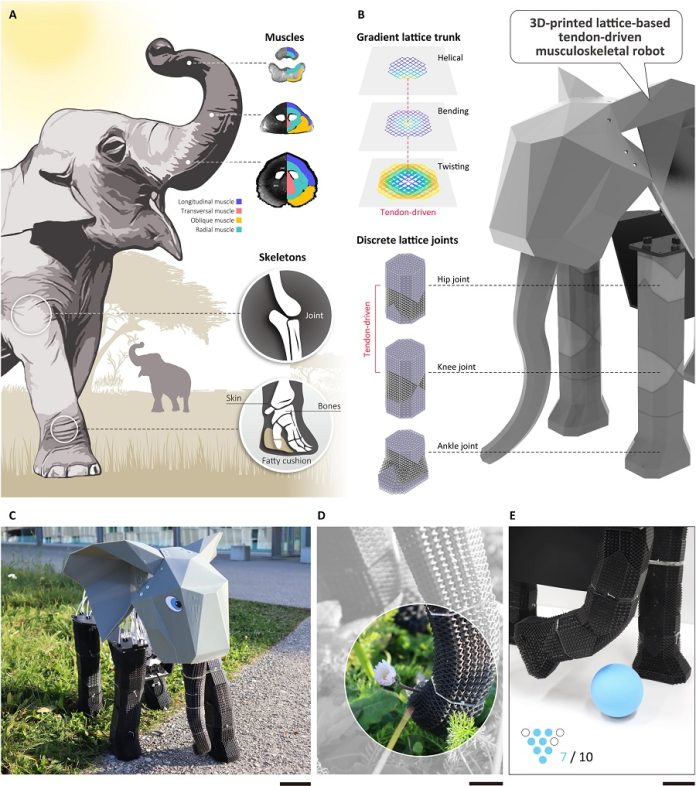
Scientists have developed a new 3D printing method that mimics the way animals move by blending soft and rigid materials—just like muscles and bones work together in real life.
The innovation, created by researchers at EPFL in Switzerland, has been demonstrated with a robot shaped like an elephant that can bend, twist, and walk with surprising agility.
This project, led by Josie Hughes and her team at EPFL’s Computational Robot Design and Fabrication Lab (CREATE), tackles one of the biggest challenges in robotics: how to replicate the smooth, powerful movements we see in animals.
In nature, soft tissues like muscles and tendons work together with rigid bones to allow creatures like cheetahs to sprint or elephants to grasp with their trunks. Until now, recreating this kind of musculoskeletal flexibility in robots has been extremely difficult.
Traditional 3D printing can use multiple materials to build soft-rigid robots, but it doesn’t allow for smooth changes in stiffness across a structure.
That’s where the CREATE Lab’s new approach stands out. Instead of relying on different materials, their robot is made from a special foam lattice—a kind of lightweight, honeycomb-like structure—built from individual 3D-printed units called “cells.”
These cells can be programmed with different shapes and positions to give the robot a variety of motion and strength.
Using two main cell types called BCC and X-cube, the researchers were able to build a lattice that can range from soft and flexible to stiff and strong.
They can also mix and rotate the cells, creating millions of different combinations to fine-tune how different parts of the robot behave. In fact, with just four layers of cells, they can create over 4 million variations—and even more with five.
To show off this technology, the team built a robotic elephant with a soft, flexible trunk and more rigid legs and joints. The trunk has different sections that allow it to bend, twist, and rotate smoothly—just like a real elephant’s. The joints in the robot’s feet and knees were also designed to move in specific, natural ways.
The foam material used for the lattice is not only lightweight and strong, but it’s also suitable for use in water and can be adapted to include sensors. That means future versions of these robots could be used for exploring underwater environments or even collecting data while moving through difficult terrain.
This research, published in Science Advances, could lead to a new generation of soft, adaptable robots that move more like living creatures and can be used in everything from search-and-rescue missions to medical devices.



